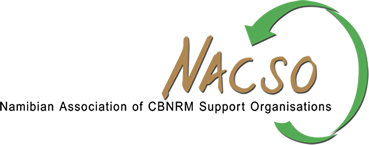Transfrontier conservation areas (TFCAs) may be parks, game management areas, conservancies, or other ecologically protected areas, or a mix of these spanning more than one country. There are many TFCAs across the globe, and strong support for the concept is provided by the Peace Parks Foundation.
Namibia is part of KAZA, the largest TFCA in the world. It is connected to South Africa via the /Ai-/Ais-Richtersveld Transfrontier Park, to Botswana via the Kgalagadi Transfrontier Park, and has an adjacent park area to Angola via the Iona and Skeleton Coast Parks.
Kavango Zambezi Transfrontier Conservation Area (KAZA)
In December 2006 the governments of Angola, Botswana, Namibia, Zambia and Zimbabwe signed a Memorandum of Understanding regarding the establishment of the KAZA TFCA over a huge area of land that stretches from the Khaudum National Park in Namibia in the west to Lake Kariba in Zimbabwe to the east.
The vision for the KAZA TFCA is ‘to establish a world-class transfrontier conservation area and tourism destination in the Okavango and Zambezi river-basin regions within the context of sustainable development’.
One of the main objectives of the TFCA is to join fragmented wildlife habitats into an interconnected mosaic of PAs and transboundary wildlife corridors, which will facilitate and enhance the free movement of animals across international boundaries. The KAZA area incorporates the largest contiguous elephant population in Africa. The number of elephants in northern Botswana alone is estimated at more than 130,000. The area includes at least 3,000 species of plants, 100 of which are endemic to the sub-region, as well as more than 600 bird species.
The KAZA TFCA would also promote cross border tourism, linking some of the world’s premier tourism destinations, including the Victoria Falls in Zimbabwe and the Okavango Delta in Botswana. The Zambezi area of Namibia plays a pivotal role in the TFCA, providing migration routes for wildlife from Botswana into Angola and Zambia.
/Ai-/Ais-Richtersveld Transfrontier Park
The /Ai-/Ais-Richtersveld Transfrontier Park (ARTFP) jointly conserves a large part of the Succulent Karoo Biome which is an international biodiversity hotspot. It was established by the governments of Namibia and South Africa and provides for joint management of the Richtersveld National Park (South Africa) and /Ai-/Ais Hot Springs Park (Namibia).
The area is well known for its rugged landscapes, including Namibia’s Fish River Canyon, the Orange River, and unique plant life such as the quiver tree (Aloe dichotoma), maiden’s quiver tree (Aloe ramosissima), the rare giant quiver tree (Aloe pillansii) and the halfmens (Pachypodium namaquanum). The ARTFP is the furthest developed of the three transboundary conservation initiatives in which Namibia is involved. The DPWM leads the MEFT’s efforts in this bilateral initiative.
On 16 October 2007 the Sendelingsdrift border post on the Orange River was opened as a joint port of entry with police and immigration services on both sides of the river. A pontoon allows tourists to move between the two countries – across the Orange River – through the parks.
Since 2007, the JMB has been investigating the feasibility of expanding the ARTP into a larger TFCA that will include other areas of land. If the TFCA were to be expanded, it would incorporate the Sperrgebiet National Park, areas of private and communal land and the //Gamaseb and Gawachab conservancies.
Iona-Skeleton Coast Park
In the far north-western corner of Namibia, the Skeleton Coast Park and Angola’s Iona National Park (Parque Nacional do Iona) meet at the Kunene River. The Namibian and Angolan governments have agreed to work together to develop a transfrontier park.
Iona, Angola’s oldest and largest national park, covers 15,150 km² and is known for its harsh desert scenery and spectacular mountains. The Namib Desert extends northwards into Iona and similar species to those found in Namibia’s Skeleton Coast Park and surrounding areas are found in Iona. These include the Welwitschia mirabilis plant and the black-faced impala. However, Iona has suffered from illegal poaching and the destruction of infrastructure, and the government needs to restore control and order over the park.
Increased co-operation between Namibia and Angola in developing the Iona-Skeleton Coast Transfrontier Park could lead to the establishment of a much larger TFCA that spans three countries along the Namib coast. Known as the Three Nations Namib Desert Transfrontier Conservation Area (TNND TFCA), this would include the /Ai-/Ais-Richtersveld TFCA to the south, the proposed Namib-Skeleton Coast National Park (NSNP) in Namibia and Iona in Angola. The NSNP would consist of the current Sperrgebiet National Park, the Namib-Naukluft Park, the proposed Walvis Bay/Swakopmund conservation area, the National West Coast Recreation Area upgraded to national park status, and the Skeleton Coast Park.
The NSNP would be the eighth-largest protected area in the world, and the sixth-largest terrestrial protected area and largest park in Africa, covering an area of 10.754 million hectares, or 107.540 km². Further, a new Marine Protected Area borders the proposed NSNP, and several private game reserves and communal area conservancies, which would add another 14 million hectares of land and sea managed for some form of conservation.
